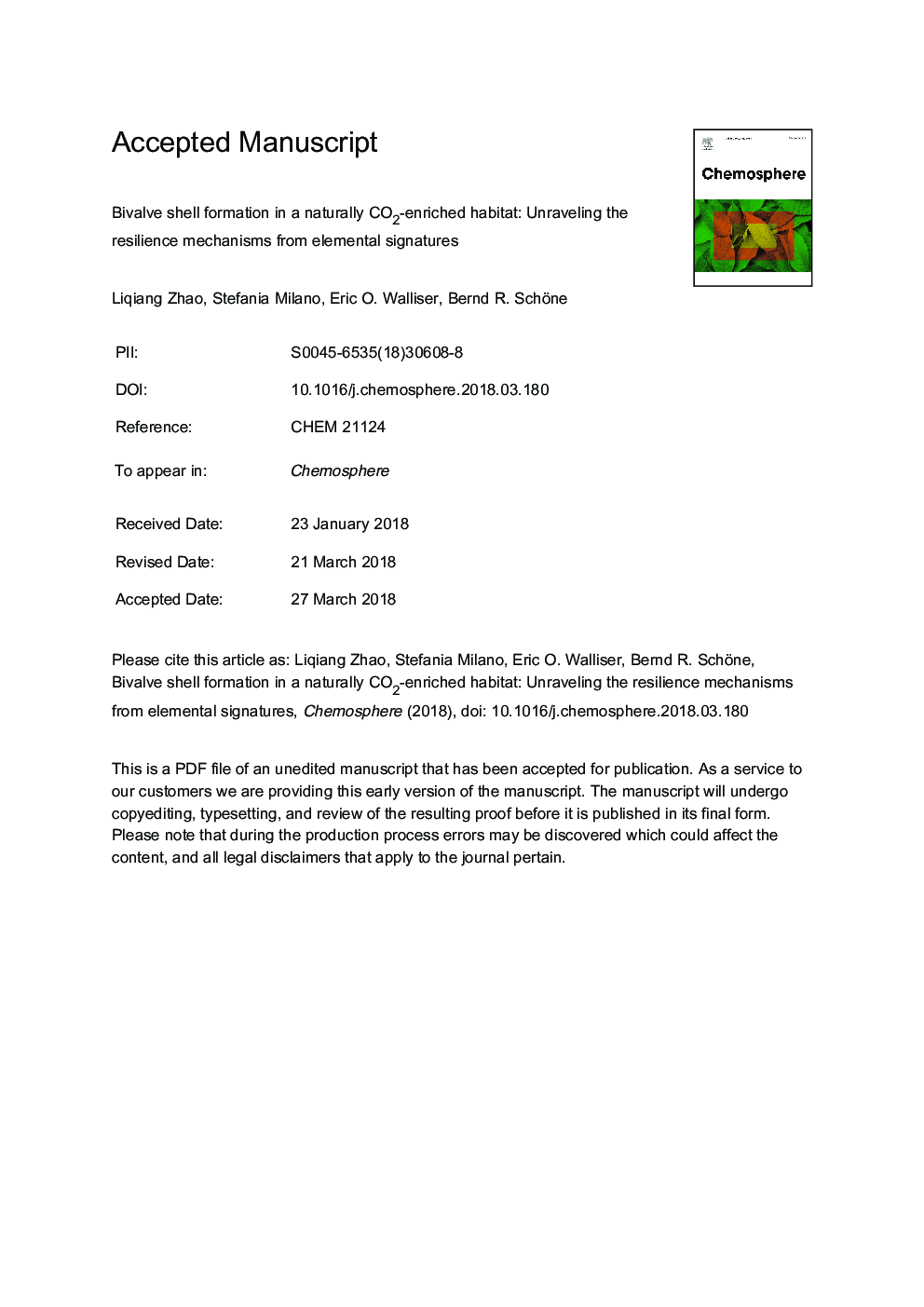| Article ID | Journal | Published Year | Pages | File Type |
|---|---|---|---|---|
| 8851254 | Chemosphere | 2018 | 28 Pages |
Abstract
Marine bivalves inhabiting naturally pCO2-enriched habitats can likely tolerate high levels of acidification. Consequently, elucidating the mechanisms behind such resilience can help to predict the fate of this economically and ecologically important group under near-future scenarios of CO2-driven ocean acidification. Here, we assess the effects of four environmentally realistic pCO2 levels (900, 1500, 2900 and 6600â¯Î¼atm) on the shell production rate of Mya arenaria juveniles originating from a periodically pCO2-enriched habitat (Kiel Fjord, Western Baltic Sea). We find a significant decline in the rate of shell growth as pCO2 increases, but also observe unchanged shell formation rates at moderate pCO2 levels of 1500 and 2900â¯Î¼atm, the latter illustrating the capacity of the juveniles to partially mitigate the impact of high pCO2. Using recently developed geochemical tracers we show that M. arenaria exposed to a natural pCO2 gradient from 900 to 2900â¯Î¼atm can likely concentrate HCO3â in the calcifying fluid through the exchange of HCO3â/Clâ and simultaneously maintain the pH homeostasis through active removal of protons, thereby being able to sustain the rate of shell formation to a certain extent. However, with increasing pCO2 beyond natural maximum the bivalves may have limited capacity to compensate for changes in the calcifying fluid chemistry, showing significant shell growth reduction. Findings of the present study may pave the way for elucidating the underlying mechanisms by which marine bivalves acclimate and adapt to high seawater pCO2.
Related Topics
Life Sciences
Environmental Science
Environmental Chemistry
Authors
Liqiang Zhao, Stefania Milano, Eric O. Walliser, Bernd R. Schöne,
